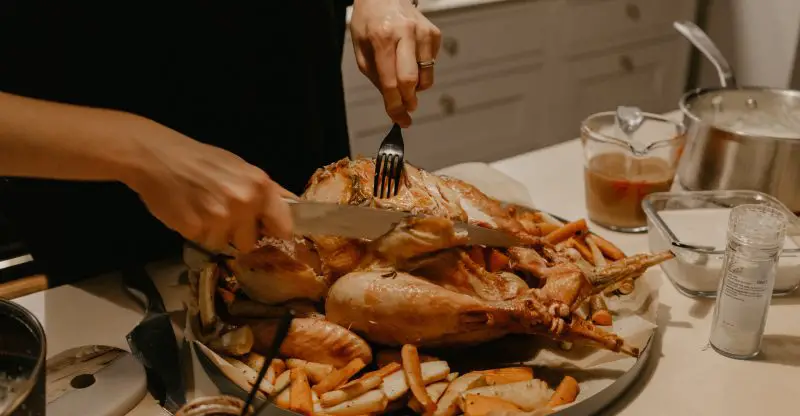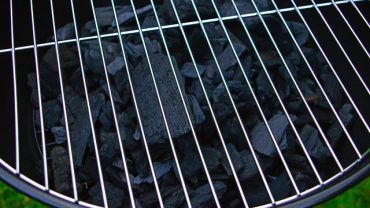How To Cook Inside Of Chicken
Get Your Chicken Perfect Inside & Out – How To Cook Inside Of Chicken
Are you tired of having perfect golden chicken on the outside while the inside is so raw it’s still clucking? If so, don’t worry you are not alone! But this post is about to change that as we explore how to cook inside of chicken.
Chicken is an extremely versatile, and inexpensive animal protein, and this, in turn, makes it the most popular choice in not only high-end restaurants but also in many humble North American homes. Despite its popularity, many still struggle when it comes to proper preparation. Whether you will be cooking the whole bird or just a breast or two, cooking chicken requires a level of skill that not many have mastered.
To properly master any ingredient, you will first have to understand exactly how it is made up, and how each section reacts to the cooking process. This is what we will aim to correct in this post to help you finally beat the dreaded cooked on the outside, raw on the inside phenomenon.
Understanding The Anatomy of A Chicken
The main parts of a chicken, or any other bird, include two legs at the base of the bird, a pair of breasts at the front of the animal, two wings at either side and two thighs attached to the legs. The picture above will give you a better idea of how to identify each popular external part. Two less popular external parts of poultry that are also edible but less preferred in North America are feet and tail, though they are popular in the cuisine of many third world territories, such as the West Indies, and even the Philippines.
The internal organs of poultry are also edible. In the culinary world, these are referred to as offals. This would include the heart, liver, and gizzards of the bird, which are all popular menu items again in third-world territories.
White Meat vs. Dark Meat
Two categories often referred to when talking about chicken and poultry are dark and white meat. The breasts of the bird are generally what is regarded as white meat. This is generally the leanest portion of the bird as it gets the least amount of exercise because there is little to no muscle it tends to cook quickly.
The legs, and thighs, on the other hand, are the most used parts of the bird. This causes muscles to build up more myoglobin (a protein source in the body that transports oxygen to the muscles) resulting in fattier, and richer meat that takes a bit longer to cook.
Poultry wings have been a grey away in terms of dark versus white meat for years as there have been good arguments supporting both claims. It all boils back down, however, to know your protein source. Domestic poultry, oftentimes, is not god flyers due to their heavy bodies, and though they frequently glide or fly across short distances, this does not require their wings to move often enough to build up a large amount of myoglobin. As such, a chicken wing will cook significantly faster than a leg or thigh. This can also be argued that this is simply due to the difference in size.
The most important thing to take away from this is that you will need to carefully examine each recipe you are about to prepare and take note of the type of meat (whether white or dark) that it calls for in advance. Both will cook differently, and in different time frames so plan your game plan accordingly.
Boneless/Skinless vs. Bone-in/Skin-on Chicken
Chicken shopping comes with a lot of decision-making as the cuts are available in boneless, bone-in, skin-on, skinless, and even a combination of these. All of which have their share of benefits, as well as disadvantages in every recipe, so it is important to understand the qualities of each cut before purchasing.
How To Decide
Think of your cooking method. If you are going to be frying, for example, you may be better off opting for the skin on variety as the skin of the animal is made up mostly of fat that will render down during the cooking process and help keep your meat moist. While a skinless cut of the breast may go better in a recipe with a quicker cooking method like a stir-fry or even a moist method such as a poached recipe.
Opting to cook with a bone – in option will help you to achieve a more evenly cooked finished dish. The cuts of meat without the bones will cook far more quickly resulting often times in an overcooked finished dish, so be sure to pay close attention while cooking if you opt for this as you will need to babysit it so that it doesn’t dry out.
Preparing Chicken for Cooking
The very first step in preparing chicken is safely defrosting the bird. To do this, remove your chicken from the freezer and place into the refrigerator before you intend to cook it. The defrosting time will be different based on the weight of chicken product. As a rule of thumb, we always try to use a 5 to 1 ratio (5 hours. Ensure that the chicken has been completely defrosted there attempting to cook
How To Cook Inside Of Chicken – Safe Cooking Temperatures
Understanding what temperature, you can safely cook chicken will accept you, not onto create a delicious, moist dish, but also help you to prevent from making your guests sick by serving an undercooked chicken. All chicken is completely cooked with the juices begin to run clear with an internal temperature of 165°F. To test this, simply insert your thermometer into the thickest part of the bird, generally the thigh, while ensuring that the thermometer does not touch the bone.
Conclusion
Chicken is so in demand these days that your new-found knowledge is bound to come in handy way sooner than you think. So, explore, explore, then explore some more. The more chicken dishes you attempt to make the more comfortable you will be in telling when its cooked all the way through.








